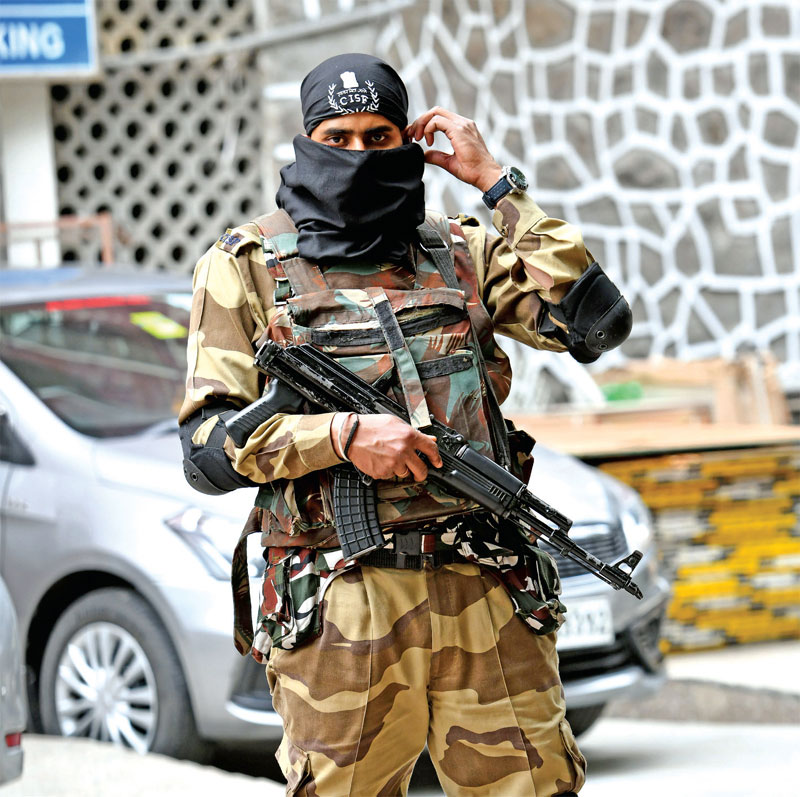CAPFs need small arms that are state-of-the-art and effective, and not the present obsolete lot
 R.C. Sharma
R.C. Sharma
The Central Armed Police Forces (CAPFs) comprising Border Security Force (BSF), Indo-Tibetan Border Police (ITBP), Sashastra Seema Bal (SSB), Central Reserve Police Force (CRPF) and Central Industrial Security Force (CISF) have a plethora of small arms in their inventory. Small arms have to inspire confidence in the holder for their accuracy, range and ease of carrying and handling. They should be usable in all weather and terrain conditions with minimum repair and maintenance needs.
The CAPFs need to do an in-depth analysis of prospective qualitative requirements (QRs) for introducing a small arm or personnel weapon system considering the security environment, which is dynamic in terms of both threat perception and technology. Consequently, the training and tactics of the CAPFs needs to be dynamic too. Unfortunately, small arms are introduced without preparation of detailed qualitative requirements considering role and task, all India service liability, terrain and weather conditions, ease of carrying and handling, range and accuracy, wear and tear, ballistics and repair infrastructure in terms of availability of spares. This is the reason all CAPFs hold identical inventory of small arms with minor variations. These deficiencies compel them to frequently procure new line of small arms, which impacts training, operational effectiveness, and creation of infrastructure for spares and ammunition.
The Current Inventory
The existing arming policy is not in consonance with operational and administrative requirements. The CAPF soldier is one of the stabilising factors in India’s external and internal security environment and need best available weapon. Yet, the CAPFs are provided small arms inventory without manpower authorisation. Inventory is an indication that procurement of small arms for CAPFs is on ad hoc basis without analysing operational and administrative needs.

Saddling the CAPFs with varying inventory without compatible manpower authorisation amounts to unprofessionally diluting operational profile. Except for Beretta Storm and X-95 rifle, the complete weapon holding is old. Beretta and X-95 too have their share of problems in terms of availability of spares and maintenance. The mainstay of small arms in CAPFs is 5.56 INSAS rifle, which is old, lacks lethality and needs immediate replacement.
Considering the operational commitments of border guarding and internal security forces, it is necessary to bring changes in the holding of small arms and replace old weapons. The endeavour should be to equip border guarding and internal security forces with uniform small arms system to meet operational requirements with universal usage, and trim down bloated inventory to bare minimum. Border guarding forces also need to be authorised specialised small arms keeping the counterpart deployment in specific areas as per operational needs worked out by respective CAPFs like sniper rifles. The need is also to have small arms with shoot to kill capability in terms of lethality to reach counterpart border outposts (BOPs) from own fortifications.
The CAPFs initially had 7.62mm self-loading rifle as personal weapons which was lethal but had other inherent drawbacks in terms of ease of carrying, handling and rate of fire. Eventually, it was replaced by 5.56 INSAS and LMG. The CAPFs were provided same types of weapons without analysis of need and threat. The present small arms inventory for CAPFs seems to be more or less the same with minor variations. For instance, all officers are authorised 9mm pistol. The troops’ authorisation includes 9mm Berretta Sten Machine Gun, 5.56 INSAS assault rifle, IWI X-95 assault rifle, AK-47 (for Left-wing extremism and Kashmir theatre), 7.62mm SLR (still in inventory and partly used for rifle grenade firing), 7.62mm TAR, Light Machine Guns, 5.56mm INSAS-Light Machine Gun, SSG-69 sniper rifle and 7.62mm Light Machine Gun. Though the latter is no longer used, it is still in the inventory.
The battalion and company commanders face huge challenge in allotting these small arms to men since out of authorised strength only about 50 per cent is available at any given point. Weapon authorisation is categorised as authorised and additional authorised. The quantity of authorised weapons is almost equal to manpower authorisation with no manpower for additional authorised weapons, meaning thereby that bloated inventory of small arms is without manpower to handle it. Therefore, there is an urgent need to carry out procurement after thorough analysis. Some battalions still have 7.62mm SLRs and LMGs, which require regular maintenance to keep them functional. Practically every available person is allotted two to three weapons for maintenance. All this is a result of adhocism and perfunctory approach in formulating arming policy.
You must be logged in to view this content.

